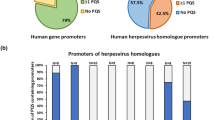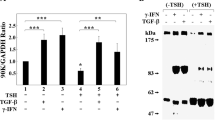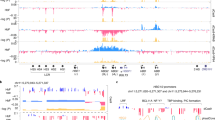Abstract
To study the transcriptional regulation of the human complement component C7, a 1 kb promoter fragment was cloned and the transcription start site was determined. C7 is expressed by the hepatoma-derived cell line Hep-3B, but not by Hep-G2. Transfection of these cell lines with different C7 promoter–luciferase constructs demonstrated that 1 kb of the 5′-flanking region contains the necessary elements for driving C7 transcription in a tissue-specific manner and showed that the sequence between −29/+102 retained the majority of C7 promoter activity in Hep-3B. Electrophoretic mobility shift assays suggested that the binding of the C/EBPα transcription factor to a C/EBP sequence located at +42 is essential for C7 expression. To investigate whether the absence of C/EBPα expression in Hep-G2 cells is responsible for the lack of C7 transcription, Hep-G2 cells were transfected with a C/EBPα expression vector. C/EBPα transactivated the C7 luciferase reported gene and restored the C7 expression in Hep-G2 cells.
This is a preview of subscription content, access via your institution
Access options
Subscribe to this journal
Receive 6 digital issues and online access to articles
$119.00 per year
only $19.83 per issue
Buy this article
- Purchase on Springer Link
- Instant access to full article PDF
Prices may be subject to local taxes which are calculated during checkout





Similar content being viewed by others
References
DiScipio RG, Chakravarti DN, Muller-Eberhard HJ, Fey GH . The structure of human complement component C7 and C5b-7. J Biol Chem 1988; 264: 549–560.
Podack ER, Tschopp J . Membrane attack by complement. Mol Immunol 1984; 21: 589–603.
Wuzner R, Joysey V, Lachmann P . Complement component C7. Assessment of in vivo synthesis after liver transplantation reveals that hepatocytes do not synthesize the majority of human C7. J Immunol 1994; 152: 4624–4629.
Naughton M, Walportm M, Wuzner R et al. Organ-specific contribution to circulating C7 levels by the bone marrow and liver in humans. Eur J Immunol 1996; 26: 2108–2112.
Morris KM, Aden DP, Knowless BB, Colten HR . Complement biosynthesis by the human-derived cell line Hep-G2. J Clin Invest 1982; 70: 906–913.
Perisutti S, Tedesci F . Effect of cytokines on the secretion of the fifth and eighth complement components by Hep-G2 cell. Int J Clin Lab Res 1994; 70: 906–911.
Wuzner RA, Orren A, Lachmann PJ . Inherited deficiencies of terminal components of human complement. Immunodefic Rev 1992; 3: 123–147.
Hogansen AK, Wuzner R, Abrahamsen TG, Dierich MP . Human polymorphonuclear leucocytes store large amounts of terminal complement components C7 and C6, which may be released on stimulation. J Immunol 1995; 154: 4734–4740.
Gasque P, Fontaine M, Morgan BP . Complement expression in human brain. Biosynthesis of terminal pathway components and regulators in human glial cells and cell lines. J Immunol 1995; 154: 4726–4733.
Langeggen H, Pausa M, Johnson E, Casarsa C, Tedesco F . The endothelium is an extrahepatic site of synthesis of the seventh component of the complement system. Clin Exp Immunol 2000; 121: 8–10.
Thomas A, Gasque P, Vaudry D, González B, Fontaine M . Expression of a complete and functional complement system by human neuronal cells in vitro. Int Immunol 2000; 12: 1015–1023.
Pettersen HB, Johnson E, Hetland G . Human alveolar macrophages synthesize active complement components C6, C7 and C8 in vitro. Scand J Immunol 1987; 25: 567–570.
Houle JJ, Leddy JP, Rosenfeld SI . Secretion of the terminal complement proteins C5–C9, by human platelets. Clin Immunol Immunopathol 1989; 50: 385–393.
Thomson RA, Lachmann PJ . The complement-mediated lysis of unsensitized cells. J Exp Med 1970; 131: 643–657.
Catala F, deBoer E, Habets G, Grosveld F . Nuclear protein factors and erythroid transcription of the human A gamma-globin gene. Nucleic Acid Res 1989; 17: 3811–3827.
Lee W, Haslinger A, Kearim M, Tjian R . Activation of transcription by two factors that bind promoter and enhancer sequences of the human metallothionein gene and SV40. Nature 1987; 325: 368–372.
Landschulz WH, Johnson PJ, Adahi EY, Graves BJ, McKnight SL . Isolation of a recombinant copy of the gene encoding C/EBP. Genes Dev 1988; 2: 786–800.
Overdier DG, Porcella A, Costa RH . The DNA-binding specificity of the hepatocyte nuclear factor 3/forkhead domain is influenced by amino acid residues adjacent to the recognition helix. Mol Cell Biol 1994; 14: 2755–2766.
González S, López-Larrea C . Characterization of the human C6 promoter. Requirement of the CCAAT enhancer binding protein binding site for C6 gene promoter activity. J Immunol 1996; 157: 2282–2290.
Lekstrom-Himes J, Xanthopoulos KG . Biological role of the CCAAT/enhancer-binding protein family of transcription factors. J Biol Chem 1998; 273: 28545–28548.
Agellon LB, Zhang P, Jiang XC, Mendelsohn L, Tall AR . The CCAAT/Enhancer binding protein trans-activates the human cholesteryl ester transfer protein gene promoter. J Biol Chem 1992; 267: 22336–22339.
Birkenmeier EH, Gwynn B, Howard S et al. Tissue-specific expression developmental regulation, and genetic mapping of the gene encoding CCAAT/enhancer binding protein. Genes Dev 1989; 3: 1146–1156.
Poli V . The role of C/EBP isoforms in the control of inflammatory and native immunity functions. J Biol Chem 1988; 273: 29179–29182.
Juan TS, Wilson DR, Wilde MD, Darlington GJ . Participation of the transcription factor C/EBPδ in acute-phase regulation of the human gene for complement component C3. Proc Natl Acad Sci USA 1993; 90: 2584–2588.
Akira S, Isshiki H, Suguita T et al. A nuclear factor for IL6 expression (NF-IL6) is a member of C/EBP family. EMBO J 1990; 9: 1897–1906.
Frohman MA, Dush MK, Martin GR . Rapid production of full-length cDNAs from rare transcripts: Amplification using a single gene-specific oligonucleotide primer. Proc Natl Acad Sci USA 1988; 85: 8998–9002.
Anand R, Riley JH, Butler R, Smith JC, Markam AF . A 3.5 kb genome equivalent multi-access YAC library: construction, characterisation, screening and storage. Nucleic Acid Res 1990; 18: 1951–1956.
Domõnguez O, López-Larrea C . Gene walking by unpredictable primed PCR. Nucleic Acid Res 1994; 15: 3247–3248.
Wingender E, Chen X, Hehl R et al. TRANSFAC: an integrated system for gene expression regulation. Nucleic Acid Res 2000; 28: 316–319.
Wuzner R, Nitze R, Gotze O . C7*9, a new frequent allele detected by an allotype-specific monoclonal antibody. Complement Inflamm 1990; 7: 290–297.
Dingam J, Lobovitz R, Roeder R . Accurate transcription initiation by RNA polymerase II in a soluble extract from isolated mammalian nuclei. Nucleic Acid Res 1983; 11: 1475–1489.
Andrews N, Faller D . A rapid micropreparation technique for extraction of DNA-binding proteins from limiting number of mammalian cells. Nucleic Acid Res 1991; 19: 2499.
Acknowledgements
We thank Dr R Wuzner for providing us with the anti-C7 antibodies, Dr M Hobart for providing us with the YAC clones, Dr GJ Darlington for the kind gift of the C/EBPα expression vector and David H Wallace (Member of the Council of Biology Editors and the Association of European Science Editors) for critical revision of the manuscript. This work was supported in part by a Spanish Ministry of Health grant Fis 00/0208.
Author information
Authors and Affiliations
Corresponding author
Rights and permissions
About this article
Cite this article
González, S., Martínez-Borra, J. & López-Larrea, C. Cloning and characterization of human complement component C7 promoter. Genes Immun 4, 54–59 (2003). https://doi.org/10.1038/sj.gene.6363902
Published:
Issue Date:
DOI: https://doi.org/10.1038/sj.gene.6363902
Keywords
This article is cited by
-
Androgen-regulated stromal complement component 7 (C7) suppresses prostate cancer growth
Oncogene (2023)
-
Effects of feeding time on complement component C7 expression in Pelteobagrus vachellii subject to bacterial challenge
Journal of Oceanology and Limnology (2018)
-
Hepatocytes: a key cell type for innate immunity
Cellular & Molecular Immunology (2016)



